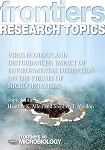
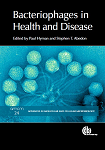
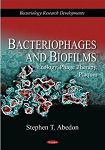
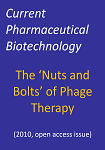
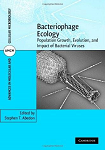
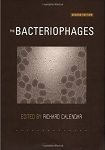
∞ generated and posted on 2017.08.26 ∞
Discussion of killing titers and their utility to phage therapy.
Please cite as:
Stephen T. Abedon
Expected Efficacy:
Applying Killing Titer Estimations to Phage Therapy Experiments.
phage-therapy.org/writings/killing_titers.html
| A Killing Titer literally is a phage titer determination that is based on the ability of added phage virions to directly kill bacteria. This is versus, for example, the potential for phages to be visualized as plaques. It is based on a Poissonal comparison of bacterial viable counts, post-phage to pre-phage application. The essay consists of Abstract, Introduction, discussion of Killing Titers, discussion of Application, and References, the latter with links to online resources. For discussion of phage adsorption theory, see adsorption.phage.org. For a multiplicity of infection calculator, see adsorption.phage.org. And here is a killing titer calculator: killingtiter.phage-therapy.org/calculator.html. |
Abstract
Scientific experiments ideally will be hypothesis driven, will have some expectation, a subsequent observation, and then some potential for comparison between these two. If observations and expectations do not coincide, then we reject or reformulate the hypothesis, or instead question the experiment itself. In many cases it is helpful for both expectations and observations to be quantitative, with an observation agreeing with an expectation as seen, for example, as conversion on a single number. Given how basic these concepts are, it can be surprising when a simple method exists towards which experimental expectations can be easily calculated, but which nevertheless does not appear to be generally used. Here I discuss the calculation for killing titers in phage therapy experiments. I consider what information may be gleaned from killing titers in terms of phage therapy pharmacology, as killing titer determinations can be used to easily distinguish active treatments from passive ones, or either from otherwise inadequate treatments.
Introduction
Phage therapy, or more generally phage-mediated biological control of bacteria, is the use of bacterial viruses to reduce numbers of pathogenic or at least nuisance bacteria (Abedon, 2009 ; Abedon et al., 2011 ). The technique is based on the idea that the adsorption of a lytic phage to a bacterium will result in the death of that bacterium. These phages are considered to display single-hit killing kinetics (Bull and Regoes, 2006 ) such that bactericidal interactions are discrete, that is, rather than consisting of the interaction of hundreds or thousands of individual antibacterial units with a target bacterium to effect antibacterial activity.
Given more or less equivalent properties for target bacteria within a population, and also equivalent properties for applied phages, then the consequence of phages interacting as discrete entities with bacteria is that those adsorptions can be modeled statistically as a Poison distribution (Dulbecco, 1949 ). With a Poisson distribution we can readily predict that fraction of bacteria which will have adsorbed no phages, that fraction which will have been adsorbed by a single phage, that fraction that will have been adsorbed by 2 phages, and so on. Here we are concerned solely with the no-phage-adsorption category, which is predicated to be equal e-M, where M stands for Multiplicity of Infection (Abedon, 2016 ) or, more precisely, Multiplicity of Adsorption, that is, the ratio of adsorbed phages to adsorbable bacteria.
Killing Titers
A killing titer employs the Poisson distribution towards estimating the number of bactericidal units found within a phage stock. The utility of killing titers is associated with their detection specifically of bactericidal particles rather than necessarily plaque-forming units. Thus, the number of virions present within a suspension can be calculated even if by standard measures those virions are not viable.
The assay requires knowledge of bacterial concentrations and demands that all phages successfully adsorb or, more specifically, only those virions which adsorb may be counted towards the killing titer. Ideally without allowing bacteria to substantially replicate over the course of this adsorption, then one calculates a final bacterial viable count. The ratio of surviving bacteria to the original total number of viable bacteria is equal to e-M, that is, that fraction of bacteria which are not bactericidally adsorbed. Multiplicity, that is, M, therefore is equal to the opposite of the natural log of that ratio. Thus, if half of the bacteria are killed, then M = -ln(0.5) = 0.69 = Multiplicity. If the original bacterial concentration was 108/ml, then the phage killing titer there is M × 108, which in this example is equal to 6.9 × 107 killing phages/ml.
(Less ambiguously, if 10% survive, i.e., 0.1, then e-M = 0.1 and therefore the killing titer is equal to -ln(0.1) = 2.3 multiplied by your starting bacterial density. If you started with 108 bacteria/ml, then your killing titer equals 2.3 × 108.)
Application
Based on these simple premises, it should be possible to add a known quantity of phages to a known quantity of bacteria, subsequently measure the number of surviving bacteria, and from that information calculate both an expected killing titer and an observed killing titer. The observed value is as calculated in the previous paragraph. The expected value can require more subtlety to calculate, though in its simpler form, little subtlety is required at all. Specifically, if one assumes that one's multiplicity of phage addition (i.e., MOIinput) – ratio of added phages to receiving bacteria – is equal to a resulting multiplicity of adsorption (i.e., MOIactual; Abedon, 2016) , then we have an expected value for M. If
Mexpected = Mobserved,
then a hypothesis that all of the added phages were able to reach, adsorb, and to a degree kill bacteria can be accepted. The qualification of "to a degree" is there because in effect if two phages adsorb a single bacterium, then only one of those phages should be counted as having done the actual bacterial killing.
Of course, in performing such an experiment it is always important to make sure that all phage adsorptions occur within the experimental environment rather than during subsequent enumeration (Brown-Jaque et al., 2016) . Nevertheless, this is a straightforward way of determining the effectiveness of a phage treatment, on a per-phage basis, and especially so when working with relatively high bacterial densities such that there can be some assurance that in fact all added phages will come to adsorb bacteria over reasonably short time frames (Abedon, 2016) .
If starting bacterial densities are not very high, such as during phage-mediated biocontrol of bacteria-contaminated foods, then the same calculation may be used to consider to what degree assumptions of a multiplicity of phage addition being similar to a multiplicity of phage adsorption are in fact correct. Specifically, if
Mexpected > Mobserved,
then we would predict either (1) that not all of the added phages are adsorbing, (2) that not all bacteria are equivalently reachable by phages, or (3) instead that bacteria are substantially replicating over the course of experiments. The latter of which can be reduced in relevance by limiting the length of experiments to less than expected bacterial doubling times.
On the other hand, if
Mexpected < Mobserved,
then we would predict that so-called active treatment (Payne et al., 2000 ; Abedon and Thomas-Abedon, 2010 ) is being observed. That is, more phages ultimately are present within the vicinity of target bacteria than actually were added, i.e., as a consequence of phage replication.
Thus, a fairly straightforward, quantitative measure of phage performance exists in the form of killing titers which allows comparison between prediction and observation.
References
Abedon, S. T. 2009. Kinetics of phage-mediated biocontrol of bacteria. Foodborne Pathog. Dis. 6:807-815.
Abedon, S. 2011. Phage therapy pharmacology: calculating phage dosing. Adv. Appl. Microbiol. 77:1-40.
Abedon, S. T. 2016. Phage therapy dosing: The problem(s) with multiplicity of infection (MOI). Bacteriophage 6:e1220348.
Abedon, S. T., and C. Thomas-Abedon. 2010. Phage therapy pharmacology. Curr. Pharm. Biotechnol. 11:28-47.
Brown-Jaque, M., M. Muniesa, and F. Navarro. 2016. Bacteriophages in clinical samples can interfere with microbiological diagnostic tools. Sci Rep. 6:33000.
Bull, J. J., and R. R. Regoes. 2006. Pharmacodynamics of non-replicating viruses, bacteriocins and lysins. Proceedings of the Royal Society of London Series B Biological sciences 273:2703-2712.
Dulbecco, R. 1949. Appendix: On the reliability of the Poisson distribution as a distribution of the number of phage particles infecting individual bacteria in a population. Genetics :122-125.
Payne, R. J. H., D. Phil, and V. A. A. Jansen. 2000. Phage therapy: The peculiar kinetics of self-replicating pharmaceuticals. Clin. Pharmacol. Ther. 68:225-230.